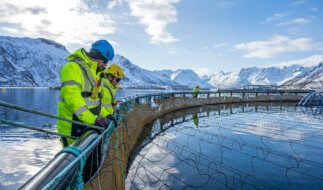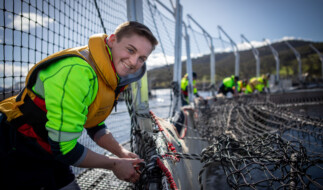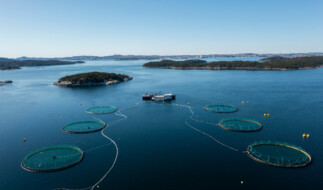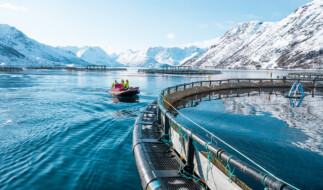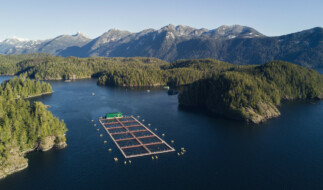The Food and Agriculture Organization (FAO) of the United Nations (UN) predicts that the world’s population will reach 9.8 billion by 2050, and the demand for food is set to increase by 50%, and demand for animal-based foods by nearly 70%. Fish, including farmed salmon, can offer a solution to meeting this increased demand.
Introducing aquaculture (fish farming)
- Aquaculture is the farming of fish, shellfish, or mollusks in water
- It is one of the most eco-efficient forms of protein production
- About 50% of seafood eaten worldwide comes from aquaculture
- It is the fastest-growing global production sector
- In 2019, the fraction of fish stocks sustainably fished decreased to 64.6%
- The planet is 70% ocean and if managed responsibly, the Ocean Panel highlighted it could provide six times more sustainable food than it does today, offering a significant contribution to sustainable food systems
Fish farming holds tremendous promise in responding to surging demand for food which is taking place due to global population growth.State of World Fisheries Report, Food and Agriculture Organization (FAO)
What is salmon farming?
Salmon is the common name for several species of fish in the family Salmonidae (e.g., Atlantic salmon, Pacific salmon). Although several of these species are available from both wild and farmed sources, the most commercially available is Atlantic salmon, which is farmed.
Salmon farming involves raising salmon throughout its lifecycle, which takes around three years. The first year of production takes place in controlled freshwater environments, and then the farmed salmon are transported to seawater where they stay through to harvest. In some cases, farmers are now utilizing post-smolt facilities which keep the salmon on land or in closed containment facilities for longer, reducing their time at sea and minimizing the chance of disease or sea lice.
Once the salmon reach a harvestable size, they are transported to processing plants to be prepared for sale. For consumers, most farmed salmon is sold as salmon fillets, although you can also purchase whole fish.
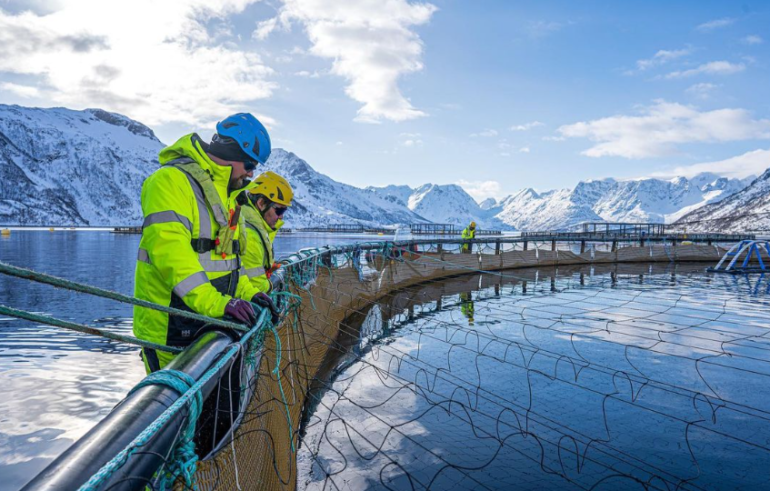
Density in salmon pens
A regular seawater pen is at least 97.5% water and 2.5% fish biomass. This provides the optimal space for the fish to thrive, have a comfortable living space, and healthy growth cycle. Sometimes when looking at a pen you may see the fish swimming close together, this is because salmon, wild or farmed, like to 'school' or swim close together as part of their natural social behavior.
Frequently asked…
Do salmon farms affect wild salmon?
Peer-reviewed science on the subject maintains that any risk is low. Salmon farmers follow strict regulations set out by the federal and provincial governments – amongst the most rigorous regulatory standards in the world, designed to ensure limited impact of ocean farms on wild salmon and to limit any interactions between wild and farmed salmon.
That being said, we take every precaution to avoid fish escapes to minimize any possible risk.
Thanks to innovative tools, improved management practices and strict management protocols, we have seen a reduction in escapes over the years and we work hard to maintain that trend.
How salmon farming began
Fish have been farmed for millennia, but salmon farming started on an experimental level in the 1960s and became an industry in Norway in the 1980s and in Chile in the 1990s. The farmed salmon industry has grown substantially in the past 60 years, and today approximately 70% of salmon produced worldwide is farmed. In 2021, more than 2.8 million tons of farmed salmonids were produced. In comparison, only around 705,000 tons of wild salmonids were caught.
Atlantic salmon farming has traditionally been dominated by a small number of farming regions – Chile, Norway, Canada, and Scotland – as several natural conditions often have to be present to ensure optimal salmon farming production. Such conditions include: cold water temperatures varying between 8°C and 14°C (46°F – 57°F), a sheltered coastline, and optimal biological conditions. Today, salmon farming also takes place in Australia, Faroe Islands, Iceland, Ireland, and New Zealand.
Selecting the right site for a salmon farm
To grow the healthiest salmon, we look for the perfect farming site. This provides the optimal conditions for the fish but also ensures the sites can become part of a sustainable ecosystem with minimal impact.
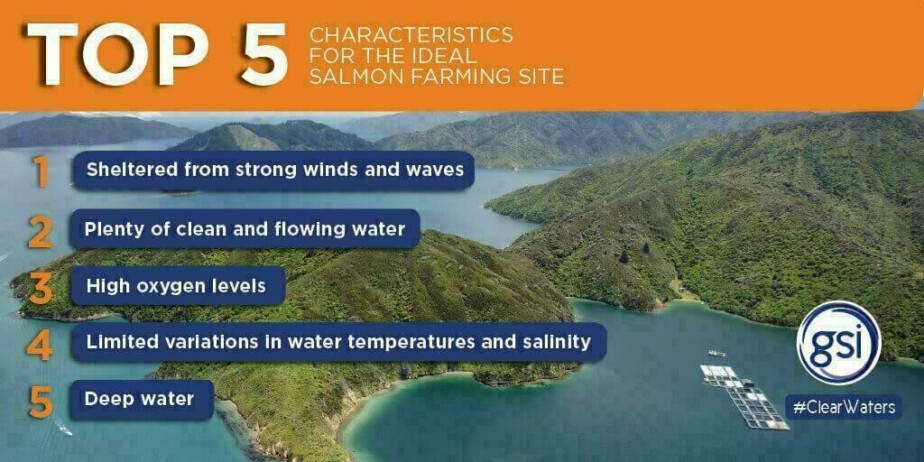
Responsibly farmed salmon supports global food system solutions by:
- Contributing a nutrient-rich food source to diets that meets global dietary recommendations
- Delivering high-quality and eco-efficient protein to help meet growing global demand
- Driving continuous innovations that help support healthier diets and more resilient global food systems
- Providing a food source that is celebrated in cuisines and communities around the world
A responsible industry also supports local communities
- Our salmon farms are often located in remote, rural communities, and through the jobs we create we often help these small communities thrive and retain the younger generations who not only work with us but also become part of the value chain
- Collectively, GSI members employ over 24,000 full-time employees across their operations, not including the wider value chain and network of supporting businesses we work with
- Our member companies also offer mentorship programs and work experience opportunities to cultivate the next generation of responsible salmon farmers
The future of salmon farming
We recognize that an increased production of farmed salmon is required to ensure future demands for protein are met. However, this must be matched by significant reductions in environmental impact and improvements in resource efficiency. As fish farmers, we recognize our ability – and our responsibility – to drive positive change at speed and scale, and we are committed to seeking and supporting advancements in aquaculture that drive healthy, sustainable food systems.
Responsible aquaculture methods can help ensure the protein we eat is produced in a way that supports nutritious diets and more sustainable food systems.
